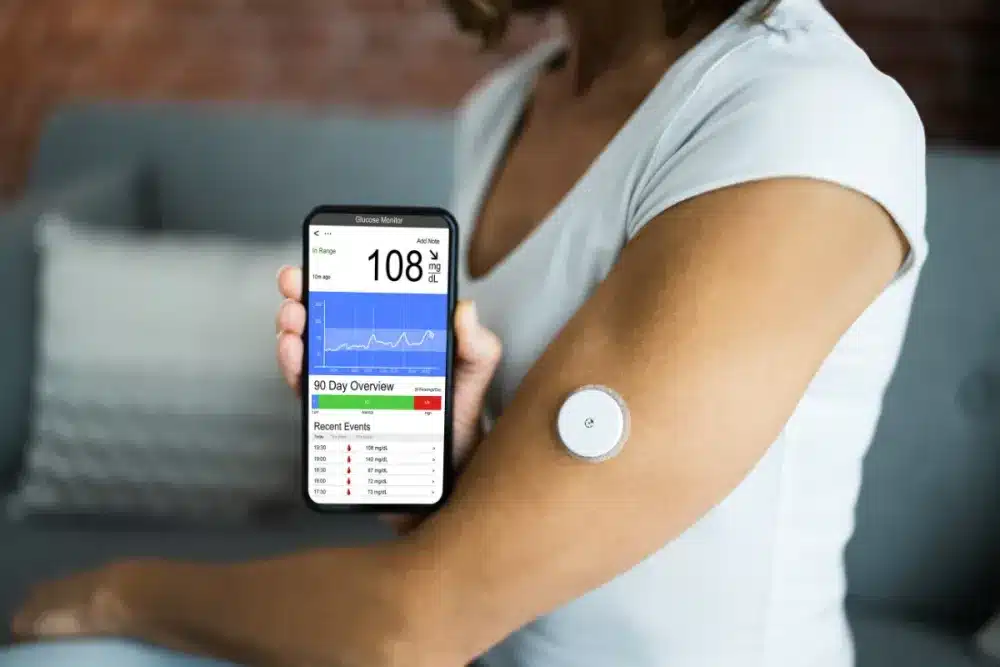In the rapidly changing field of medical technology, Continuous Glucose Monitoring (CGM) has become a revolutionary instrument. While traditionally used by individuals with diabetes to manage their condition, its application in hospital settings is gaining momentum. This article explores how Continuous Glucose Monitoring can aid hospital patients, enhancing their care and potentially saving lives.
What is Continuous Glucose Monitoring?
Continuous Glucose Monitoring (CGM) is a method of tracking glucose levels in real-time throughout the day and night. Unlike traditional glucose meters that require finger-prick blood samples, CGM systems use a small sensor placed under the skin. This sensor measures glucose levels in the interstitial fluid and sends data to a display device, allowing for continuous monitoring.
The Need for CGM in Hospitals
Hospitals are environments where patient health can change rapidly, necessitating constant monitoring and swift interventions. For patients with diabetes or those experiencing stress-induced hyperglycemia, maintaining optimal glucose levels is critical. However, traditional glucose monitoring methods can be invasive, sporadic, and often insufficient in providing timely data.
Benefits of Continuous Glucose Monitoring for Hospital Patients
Real-Time Data and Alerts
CGM systems provide real-time data on glucose levels, which is crucial for hospital patients who may experience sudden fluctuations. Immediate alerts for hypo- or hyperglycemia allow healthcare providers to intervene promptly, preventing complications such as diabetic ketoacidosis or severe hypoglycemia.
Improved Glycemic Control
Continuous data from Continuous Glucose Monitoring systems help in fine-tuning insulin therapy and other treatments. For critically ill patients, maintaining tight glycemic control can reduce the risk of infections, improve wound healing, and decrease the length of hospital stays. Studies have shown that using CGM in hospitals can lead to better glycemic control compared to traditional methods.
Reduced Need for Finger Pricks
One of the significant advantages of Continuous Glucose Monitoring is the reduction in the need for frequent finger-prick tests. This not only enhances patient comfort but also decreases the risk of infection and improves overall patient experience, particularly for those who are already dealing with multiple medical procedures.
Enhanced Data Accuracy
CGM systems provide a comprehensive view of glucose trends and patterns, offering more accurate data than intermittent testing. This information is invaluable for healthcare providers to make informed decisions about patient care, medication adjustments, and dietary recommendations.
Proactive Management
With the continuous flow of glucose data, healthcare providers can identify patterns and predict potential issues before they become critical. This proactive approach enables better management of diabetes and other glucose-related conditions, leading to improved patient outcomes.
More Read About Exploring Continuous Glucose Monitors & Hybrid Closed-Loop Systems
Case Studies and Research
Several studies have highlighted the positive impact of CGM on hospital patients. For instance, a study published in the Journal of Diabetes Science and Technology found that CGM use in intensive care units resulted in improved glycemic control and reduced instances of severe hypoglycemia. Another research conducted by the American Diabetes Association demonstrated that CGM could significantly reduce the length of hospital stays for diabetic patients.
Challenges and Considerations
Cost and Accessibility
One of the primary challenges of implementing CGM in hospitals is the cost. CGM systems can be expensive, and not all healthcare facilities may have the budget to adopt this technology. Additionally, there may be a learning curve for healthcare staff to effectively use and interpret CGM data.
Integration with Hospital Systems
Integrating CGM data with existing hospital information systems can be complex. Ensuring seamless data flow and real-time accessibility requires robust IT infrastructure and interoperability between different medical devices and software.
Patient-Specific Factors
Not all patients may be suitable candidates for CGM. Factors such as skin conditions, allergies to sensor adhesives, and patient willingness to wear the device can impact the feasibility of CGM use. Personalized assessment is essential to determine the best monitoring approach for each patient.
Future Directions
As technology advances, the cost of CGM systems is likely to decrease, making them more accessible for hospital use. Future developments may also include improved sensor accuracy, longer sensor life, and enhanced integration with other medical devices. Research into the broader application of CGM in various hospital departments, beyond endocrinology and diabetes care, is ongoing.
Conclusion
Continuous Glucose Monitoring (CGM) represents a significant advancement in patient care within hospital settings. By providing real-time, accurate glucose data, CGM can enhance glycemic control, reduce the need for invasive tests, and improve overall patient outcomes. As hospitals continue to adopt this technology, the potential benefits for patient care and management are immense.


